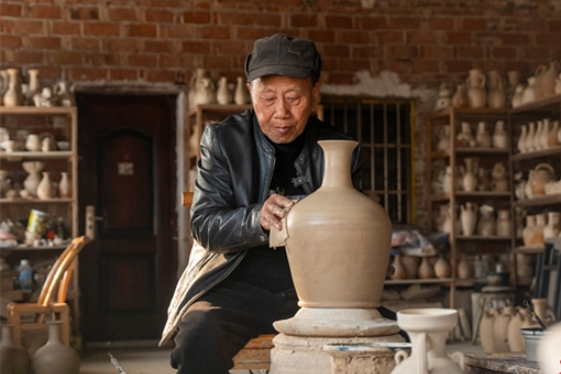After hours of riding in the car, we came upon a group of new houses looming in front of us in Baojing, a Guizhou province village that has a history of more than 300 years and its traditional wooden architecture and Dong ethnic group inhabitants with their lifestyle that keeps them in harmony with nature. Baojing was added to China's Traditional Village list, in 2013 and put under provincial protection, making it a popular spot with people who wanted to experience the simple life and see some traditional architecture until a fire ruined everything for the village, on Jan 25, 2014, and more than 1,000 villagers lost their homes and belongings. So, the Guizhou government thought that reconstructing the village was an important matter. Long Tongming, 39, experienced the disaster first hand when it burned everything he had, and, in describing it and the new houses they moved into on Dec 19, 2014, says, "I built a wooden house in 2008, then just a few years later, it was gone, but now, we're delighted to be living in new housing, and it's not flammable." They had to live in a tent camp for nearly a year as the government built 222 buildings for 276 households who lost their homes and Long goes on to explain,"Before the fire, lots of foreign tourists visited the village, especially in June, but the situation is different now, with far fewer overseas tourists than before. The younger generation want to live in concrete buildings, while the elder prefer the wooden structures they lived in for hundreds of years." The 30 year-old Zhou Hehai, who said is busy with his small retail shop near the entrance to the village, expresses his delight with the new houses, noting,"There's no doubt about it, I prefer living in the well-designed concrete buildings, however those wooden houses gave us a lot more chances to reminiscence about the past." The concrete buildings all have the design and construction, but a balcony with Dong characteristics, and one skeptical outsider, Olena Bogdanova, a Ukrainian who teaches in the city of Zhenyuan not far away, comments,"I'm a fan of wooden architecture, but now I look around the village and all I see is concrete, which is not quite right. The government should do research on inflammable wooden materials to rebuild the ruined houses." True, wood was the main material for the Dong people's homes but a headache for people in fire control. But, that architecture was a symbol of Dong culture, and, according to Wen Dongyue from neighboring Hunan province,"As a member of the Dong people, I feel a sadness as I see my ancestral legacy gradually disappear." To which, Deng Minwen, head of China's Dong Literature Association, adds,"It's necessary to do a good job preserving valuable traditional architecture, but to use new materials to rebuild them in a traditional style." Recently the traditional villages and their preservation have gotten more attention as more of them disappear either from fire or other reasons, but all these new villages and building are all alike and have no individual characteristics, a common problem. The Research Center for Chinese Village Culture reports that traditional villages have been decreasing at a rate of 7.3 percent annually, and, on average, 1.6 disappear every day.
Traditional villages go concrete
Editor:李莎宁
Source:红网综合
Updated:2015-04-24 19:29:59
Source:红网综合
Updated:2015-04-24 19:29:59
Special
Contact
Welcome to English Channel! Any suggestion, welcome.Tel:0731-82965627
lisl@rednet.cn
zhouqian@rednet.cn











